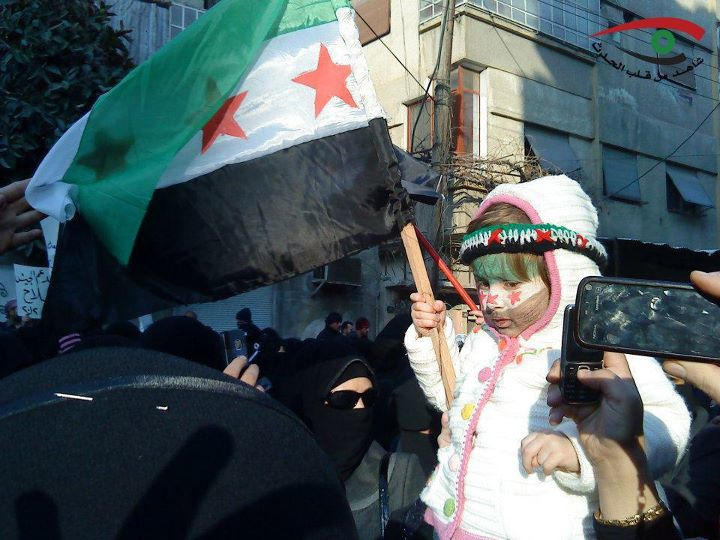It is April 1998 and lunch is almost over at the Al Kawakbi School. The “Chanting Period” has started, with the instructor leading, “Our president forever,” and the students and I replying, “The President Hafez al-Assad.” It was a hard notion to grapple as a child that one man would rule for his entire life. I asked myself many times how Hafez al-Assad could possibly believe he should be our president forever. But to ponder these thoughts out loud was prohibited in my country because of the lack of freedom of expression. I asked my father about these matters, but he was afraid to tell me the truth, even when we were alone.
On June 10, 2000, President Hafez al-Assad passed away, and the presidency was transferred to his son Bashar al-Assad, as if he had been crowned Syria’s next monarch. Since the start of his presidency, contrary to his father’s administration, Bashar al-Assad tried to project a positive image of himself to the Syrian people. He tried to change the militaristic image that his father had held, and to appear as a gentle, warm-hearted president while simultaneously maintaining the dictatorship and oppression of his regime. He also wanted to appear directly responsible for developing the nation and bringing it into the twenty-first century.

With the change in leadership, Syrians hoped to see reform to the political and economic system that had been unchanged for forty years since the Baathist takeover. Unfortunately, the economy had gotten worse, with unemployment increasing[i] and the education system producing insufficient human capital.[ii]
Last December, the Arab Spring began with the Tunisian uprising that saw the departure of President Zine al-Abidine Ben Ali. This was closely followed by the January 25 Revolution in Egypt. Syrian youth, including myself, monitored both revolutions closely, waiting for the spark that would ignite an uprising against Bashar al-Assad’s regime.
It is February 17, 2011: A policeman hits someone in Damascus, and a massive demonstration is launched in support of the victim. The news is surprising, given Syria’s unpreparedness for this kind of situation. With this news, I saw the happiness in my friends’ faces. It was the spark they had long been waiting for.
It is March 15, 2011: Political prisoners’ families start a demonstration in the center of Damascus demanding their loved ones’ freedom. This date will come to mark the formal start of the Syrian Revolution.
Initially, hope was widespread among many citizens, especially after the success of the Egyptian people in toppling the regime of Hosni Mubarak. Syrians felt they had the right to be free as well. Fear was a significant factor too, as it had existed among Syrians since Hafez al-Assad’s presidency. Fear affected the uprising’s growth, with many Syrians remembering the 1982 Hama massacre that left thousands of civilians dead. Additionally, the mukhabarat, or secret police, were widely known to make citizens disappear who appeared not to support the Assad regime.
Bashar al-Assad’s popularity initially drove the Syrian people to ask merely for reforms, despite the killing of dozens of people in Daraa during the first two weeks of protest.[iii] The president’s popularity fell after his first speech since the revolution began when he scoffed at the demonstrators and their demands. Syrians were disappointed, with many feeling a new resentment to a formerly popular leader.[iv] Getting people into the streets would be much more of a challenge because of this rampant fear. Bashar al-Assad’s popularity, which the regime relied upon throughout the past 11 years, was great enough to make the uprising different from other revolutions in the region. This is because many continue to see al-Assad as a reformer and a protector of minorities in a highly diverse country.
The revolution took off when the people of Hama began to demonstrate. Hama, which suffered heavily during the 1982 massacre, brought huge momentum and made the revolution into a significant story. On the first day of protests in Hama, at least 65 people were killed by the secret police.[v] A month later, Hama’s demonstrations grew to more than 500,000 protesters with amazing chants, captivating the hearts and minds of Syrians everywhere.[vi]
This was a milestone in the uprising. The huge number of protesters against the regime helped to break down a significant part of the fear obstacle. Syrian people began to believe that their revolution would never subside without major changes. After almost eight months of protesting, the Syrian people have two demands: justice for the victims, and the downfall of the Assad regime. All of this started eight months ago with requests for simple reforms, but the chants today have escalated to demanding the fall of the regime and the hanging of the president.
The Syrian people have refused any kind of external military interference, but after more than 3,500 citizens were killed[vii] and more than 40,000 taken as prisoners[viii], they are now asking the international community and the United Nations to put more pressure on this regime to stop the killing. The Syrian revolution is now mature in all aspects, with hundreds taking creative steps to help bring about the downfall of the regime. Thousands of activists are working on documenting protests and killings by government forces while spreading the word to the outside world.
The Syrian government’s propaganda continuously calls protesters terrorists, while nothing is further from the truth. The peaceful nature of the Syrian people remains their greatest weapon, providing protection and legitimacy, while the regime continues to kill protesters and use exceptionally brutal tactics. The Syrian people are committed to bringing about meaningful change through peaceful means.
Homs, Syria’s third largest city has become the capital of the revolution, with more than 1,000 people killed and continuous demonstrations in each neighborhood. The city’s determination and persistence has caused it to be shelled by artillery fire from the army. Every day the number of dead increases, suppressing hope for a peaceful resolution to the conflict. At the same time, I grow increasingly certain that the revolution will succeed, as does every Syrian who dreams for the freedom that most of the rest of the world enjoys.
The Syrian revolution includes Syrians from all races, sects and classes – even Alawites, who belong to the sect of the president and his main supporters. This diversity has allowed the revolution to spread to all cities, towns and villages. This diverse opposition is possible because of a common goal among Syrians: the desire to build a civilian government based on free and fair elections containing all political parties, allowing Syrians to exercise their human rights to achieve a decent and peaceful life.
[i] Economist Intelligence Unit, “Country Report: Syria,” November 2011
[ii] Legatum Institute, “The 2011 Legatum Prosperity Index: Syria,” http://www.prosperity.com/country.aspx?id=SY.
[iii] Human Rights Watch, “Syria: Security Forces Kill Dozens of Protesters,” 24 March 2011, http://www.hrw.org/news/2011/03/24/syria-security-forces-kill-dozens-protesters.
[iv] Nicholas Blanford, “President Assad’s defiant speech stuns Syrians who call for more protests,” Christian Science Monitor, 30 March 2011, http://www.csmonitor.com/World/Middle-East/2011/0330/President-Assad-s-defiant-speech-stuns-Syrians-who-call-for-more-protests.
[v] Lim Stack, “Syrian Tanks Move in on City as Thousands Mourn Protestors Deaths,” New York Times, 4 June 2011, http://www.nytimes.com/2011/06/05/world/middleeast/05syria.html
[vi] “Half a million’ protest on streets of Hama,” Al Jazeera, 8 July 2011, http://www.aljazeera.com/news/middleeast/2011/07/2011780473138345.html
[vii] “Syria crackdown on protests has killed more than 3,500, says UN,” The Guardian, 8 November 2011, http://www.guardian.co.uk/world/2011/nov/08/syria-crackdown-death-toll-3500-un?mobile-redirect=false
[viii] “Patients tortured in Syrian hospitals: Amnesty,” MSN News, 25 October 2011, http://arabia.msn.com/News/MiddleEast/AFP/2011/October/10206023.aspx?region=all.&featuredAll


